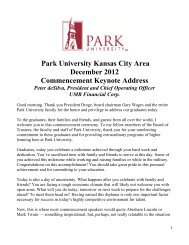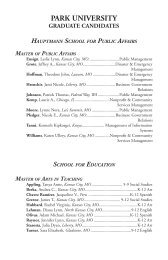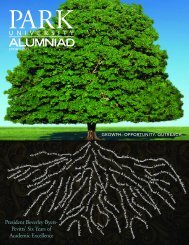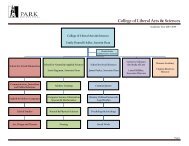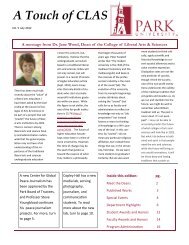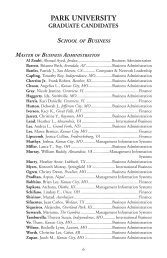How to Write a Radio Serial Drama for Social Development- PDF
How to Write a Radio Serial Drama for Social Development- PDF
How to Write a Radio Serial Drama for Social Development- PDF
You also want an ePaper? Increase the reach of your titles
YUMPU automatically turns print PDFs into web optimized ePapers that Google loves.
34 Chapter Three: Characteristics of <strong>Radio</strong> <strong>Serial</strong> <strong>Drama</strong><br />
Message:<br />
A specific message or lesson <strong>for</strong> the audience that is related <strong>to</strong><br />
the theme. For example, a drama based on the universal<br />
theme of the joy of parenthood might also contain the<br />
health message that both fathers and mothers need <strong>to</strong> be<br />
alert <strong>to</strong> their children’s health needs and even willing <strong>to</strong><br />
<strong>for</strong>go other activities in order <strong>to</strong> provide their children with<br />
proper care.<br />
Introduction<br />
<strong>Drama</strong>tic Conflict<br />
The Structure of a <strong>Drama</strong><br />
The plot of every s<strong>to</strong>ry and, there<strong>for</strong>e, every drama, is built on the same fivepart<br />
structure:<br />
1. Introduction. The beginning of the drama, during which the major<br />
character appears perhaps along with one or two other characters, the<br />
plot (action) is initiated, the dramatic conflict is begun or hinted at, and<br />
the theme is <strong>for</strong>eshadowed.<br />
2. <strong>Development</strong> (with conflict). The main body of the drama, during<br />
which the plot advances and dramatic conflict develops.<br />
3. Climax. The point where the dramatic conflict becomes so intense that<br />
something must happen <strong>to</strong> end it.<br />
4. Resolution or denouement. The final portion of the plot, in which the<br />
dramatic conflict is resolved or the problem solved. The conflict may be<br />
resolved in an unpleasant manner, <strong>for</strong> example, by divorce, murder, war,<br />
or death. Alternatively, the conflict may be resolved amicably or even in<br />
an amusing way. In an Enter-Educate drama, a negative resolution<br />
demonstrates what can happen if the pro-social message is ignored; a<br />
positive resolution shows the rewards of a message learned and practiced.<br />
5. Conclusion. The ending, during which the loose ends of the s<strong>to</strong>ry are<br />
tied up, either by the writer or the audience. Some cultures enjoy<br />
“dilemma tales,” in which the<br />
action s<strong>to</strong>ps just be<strong>for</strong>e the conclusion<br />
<strong>to</strong> allow audience members <strong>to</strong> fill<br />
Climax<br />
in the ending <strong>for</strong> themselves. In<br />
an Enter-Educate drama, the resolution<br />
and conclusion underscore the<br />
relevance of the message <strong>to</strong> the<br />
listening audience.<br />
The following short s<strong>to</strong>ry—one of<br />
Aesop’s fables—illustrates the five-part<br />
structure of a s<strong>to</strong>ry. It provides a good<br />
example <strong>for</strong> Enter-Educate writers,<br />
<strong>Drama</strong>tic Conflict<br />
because fables traditionally contain an<br />
educational message as well as the other<br />
four components of a s<strong>to</strong>ry. Later script<br />
Conclusion<br />
samples in this book demonstrate how<br />
this s<strong>to</strong>ry structure is maintained even<br />
when a more complex social message is<br />
added.<br />
<strong>Development</strong><br />
Resolution




